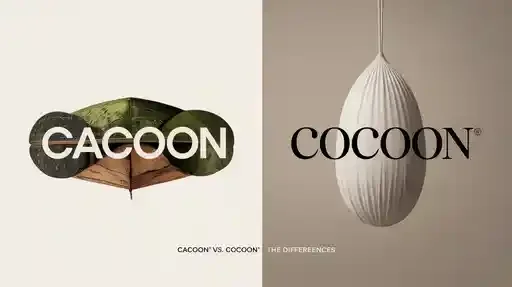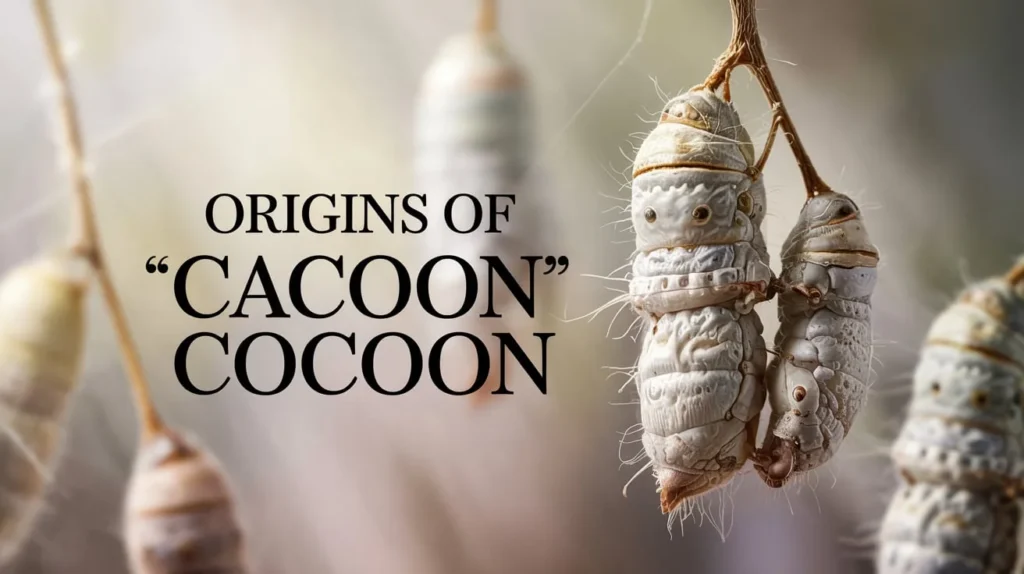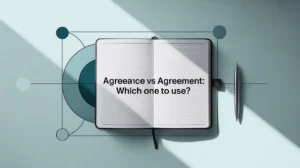English is a tricky language, full of nuances, exceptions, and oddities. If you’re an avid reader or a writer, you’ve probably come across confusing word pairs that can leave you scratching your head. One of the most common instances of confusion happens with words that sound alike but are spelled differently. A prime example is the mix-up between “Cacoon” vs. “Cocoon.”
At first glance, the two words seem interchangeable. They sound the same, and visually, they’re almost identical. But when you dig deeper, you’ll discover that one is a legitimate, widely accepted term, while the other is nothing more than a misspelling. Understanding the difference between “Cacoon” and “Cocoon” is crucial for clarity in writing and communication. So, let’s break down this confusing pairing and explore why this mix-up happens, what each term means, and how to use them properly.
Whether you’re a student, professional, or someone who loves language, this article will help you understand why the correct spelling matters. We’ll explore the meanings, usage, and origins of both words, so you can confidently use “Cocoon” in your writing without falling into the trap of misspelling it as “Cacoon.”
Why is There Confusion Between Cacoon and Cocoon?
When it comes to spelling, English often doesn’t play fair. The words “Cacoon” and “Cocoon” are a great example of this. Let’s take a closer look at why people get these two words mixed up.
Phonetic Similarity
The primary reason for this confusion lies in the way these words sound. “Cacoon” and “Cocoon” are pronounced the same. To the untrained ear, they could easily be mistaken for one another, especially when spoken quickly. Since there is no clear distinction in pronunciation, it’s easy to slip up and type the wrong spelling.
Lack of Awareness
Another reason is that many people don’t realize that “Cacoon” is actually an incorrect spelling. They might have encountered the misspelling online or in informal settings and subconsciously adopted it. The error is often overlooked in casual conversations, but it becomes apparent in formal writing, where correct spelling is expected.
Typographical Mistakes
Sometimes, “Cacoon” is simply a typographical mistake. The extra “A” might creep in when someone is typing too quickly, especially since both words are quite similar in structure. This mistake is common with words that have double letters, such as “cocoon,” where the fingers slip and type an extra letter.
Misleading Influence from Other Words
The presence of similar-sounding words or names like “Cacoon” in different languages or as brand names might also influence people to use the wrong spelling. When people see or hear these variations, it can affect their choice of spelling.
What is a “Cacoon”?
“Cacoon” is, in fact, not a valid word in the English language. It is simply a misspelling of the word “Cocoon.” Despite its existence in casual writing or internet searches, “Cacoon” doesn’t appear in any dictionary or standard reference.
Why Do People Use “Cacoon”?
The use of “Cacoon” is primarily due to the phonetic similarity to the word “Cocoon.” Some people mistakenly add the extra “A” when typing, thinking it’s the correct form. This mistake is especially prevalent in informal writing or online communication, where people aren’t always mindful of their spelling.
Examples of Incorrect Usage:
- “The caterpillar spun a cacoon around itself to protect it.”
- “We need to study the cacoon of this species in greater detail.”
Both of these examples are incorrect. “Cacoon” is not a proper term, and using it would confuse your audience or make your writing appear unprofessional.
What is a “Cocoon”?
“Cocoon” is the correct spelling and a legitimate word in the English language. It refers to a silky protective covering spun by certain insects, such as moths and butterflies, as part of their pupal stage.
Biological Definition
In biological terms, a cocoon is a structure that serves as protection for a developing insect. The cocoon protects the larvae or pupa from environmental hazards while it undergoes its metamorphosis. The most famous example is the caterpillar of a moth or butterfly, which spins a cocoon to shelter itself until it transforms into its adult form.
Metaphorical Meaning
In a more metaphorical sense, “cocoon” can refer to a stage of transformation or isolation. People often use the term to describe a period of change or personal growth, where an individual may withdraw temporarily from the outside world to focus on self-improvement.
Examples of Correct Usage:
- “The butterfly emerged from its cocoon after weeks of development.”
- “She entered a cocoon of silence, focused solely on her writing.”
“Cacoon” vs. “Cocoon”: The Differences

Let’s break down the key differences between these two terms—spelling, meaning, and usage—to give you a clearer understanding of why one is correct and the other is not.
Spelling:
- Cacoon is incorrect, likely a typographical error or a phonetic misunderstanding.
- Cocoon is the correct spelling, and it is the word you should use in all cases.
Meaning:
- Cacoon has no real meaning in the English language. It’s a misspelling of the word “Cocoon.”
- Cocoon, on the other hand, refers to both the physical structure created by some insects and a metaphorical term for personal growth or transformation.
Usage:
- Cacoon should never be used in formal or informal writing.
- Cocoon is widely used both in biological contexts (insects) and metaphorically (personal growth, protection).
Examples of “Cacoon” and “Cocoon” in Context
Here are some real-world examples to highlight the correct usage of both words.
“Cacoon” in Context:
While you’ll rarely encounter this misspelling in professionally written texts, here are a few incorrect examples of how “Cacoon” might be used:
- “The moths spend several days in their cacoon before emerging.”
- “The cacoon was found hanging from the tree branch.”
These sentences are both grammatically incorrect due to the use of “Cacoon” instead of the correct “Cocoon.”
“Cocoon” in Context:
Now, let’s look at proper examples where “Cocoon” is used correctly:
- “The caterpillar spun a cocoon around itself to protect its delicate form.”
- “During her retreat, she created a cocoon of creativity, blocking out all distractions.”
- “The pupal stage of a moth involves the formation of a cocoon, where the insect undergoes metamorphosis.”
These examples clearly show how “Cocoon” is used in both biological and metaphorical contexts.
Origins of “Cacoon” and “Cocoon”

Origins of “Cacoon”
As noted earlier, “Cacoon” is simply an incorrect variant of the word “Cocoon.” It does not have its own distinct historical origin or etymology. The mistake likely arose due to a phonetic confusion or typing error, especially since the sound of the word seems to invite the extra “A.”
Origins of “Cocoon”
The word “Cocoon” comes from the French word cocon, which itself has roots in the Latin word coconus, meaning “a shell or covering.” The word was introduced to English in the 17th century and has maintained its current meaning throughout its history.
The biological meaning of cocoon is tied directly to the life cycle of various insects, most notably the moth and butterfly, which use cocoons as protective structures during their pupal stages.
Conclusion
In the debate of Cacoon vs. Cocoon, the answer is simple: only Cocoon is correct. “Cacoon” is merely a misspelling that should be avoided at all costs. Whether you’re discussing the biological transformation of insects or using “cocoon” metaphorically, it’s important to spell the word correctly to maintain professionalism and clarity in your writing.
By understanding the reasons for the confusion, you can avoid falling into the trap of using “Cacoon” and ensure that your writing is both accurate and polished. So, next time you’re writing about a caterpillar or a period of personal growth, remember to double-check that you’re spelling “Cocoon” right—because the difference is more than just an extra “A.”

Emma Rose is an experienced English educator, writer, and language enthusiast dedicated to helping learners unlock the full power of the English language. At SynoEnglish, she shares practical grammar tips, clear explanations, and real-world language insights to make learning both effective and enjoyable. With a passion for words and a love for clarity, Emma’s goal is to help readers speak and write with confidence.



